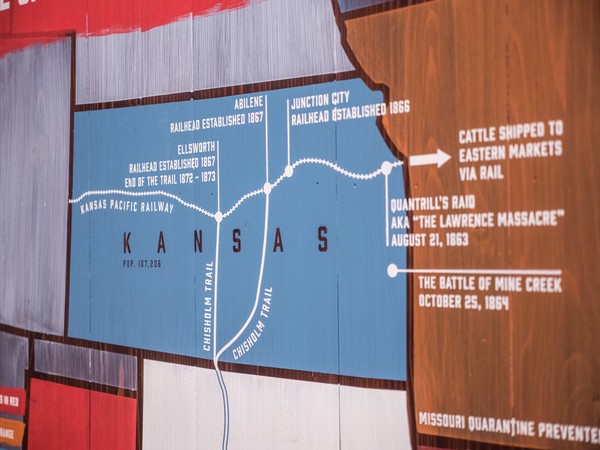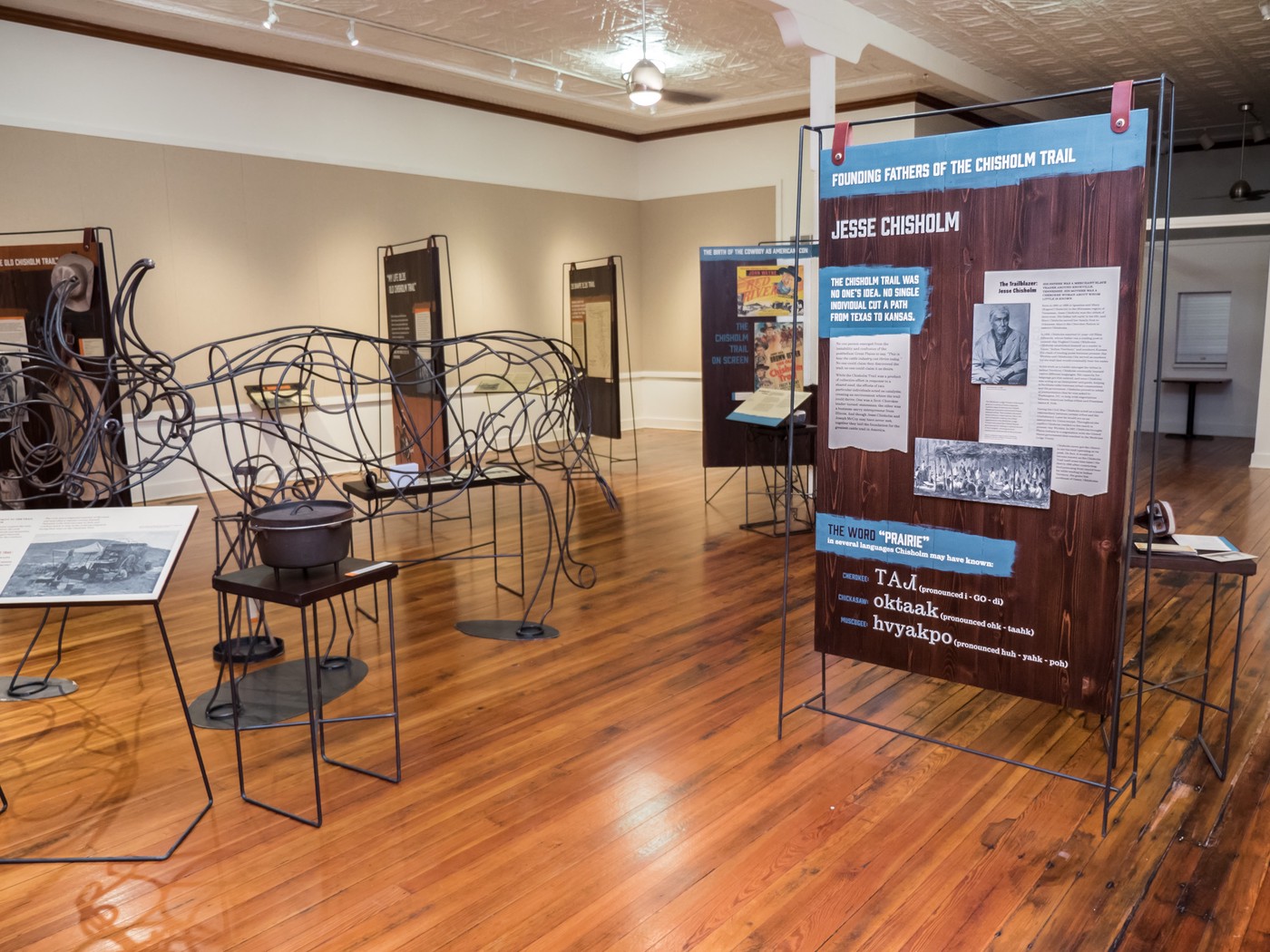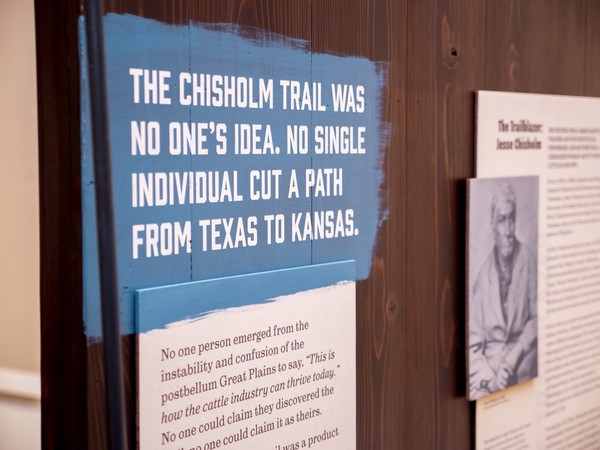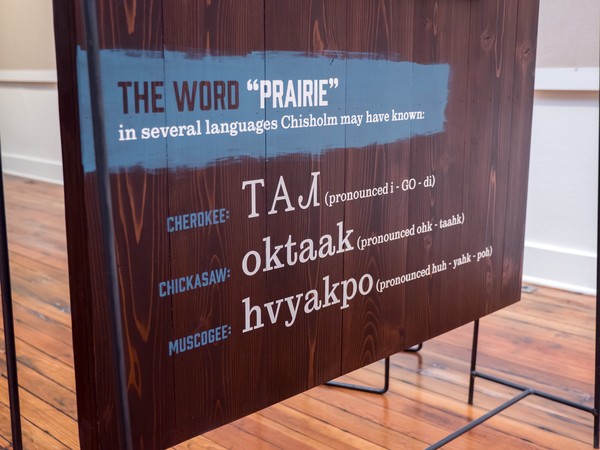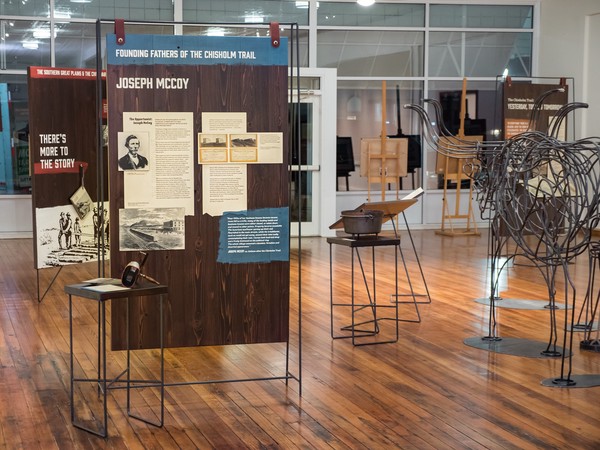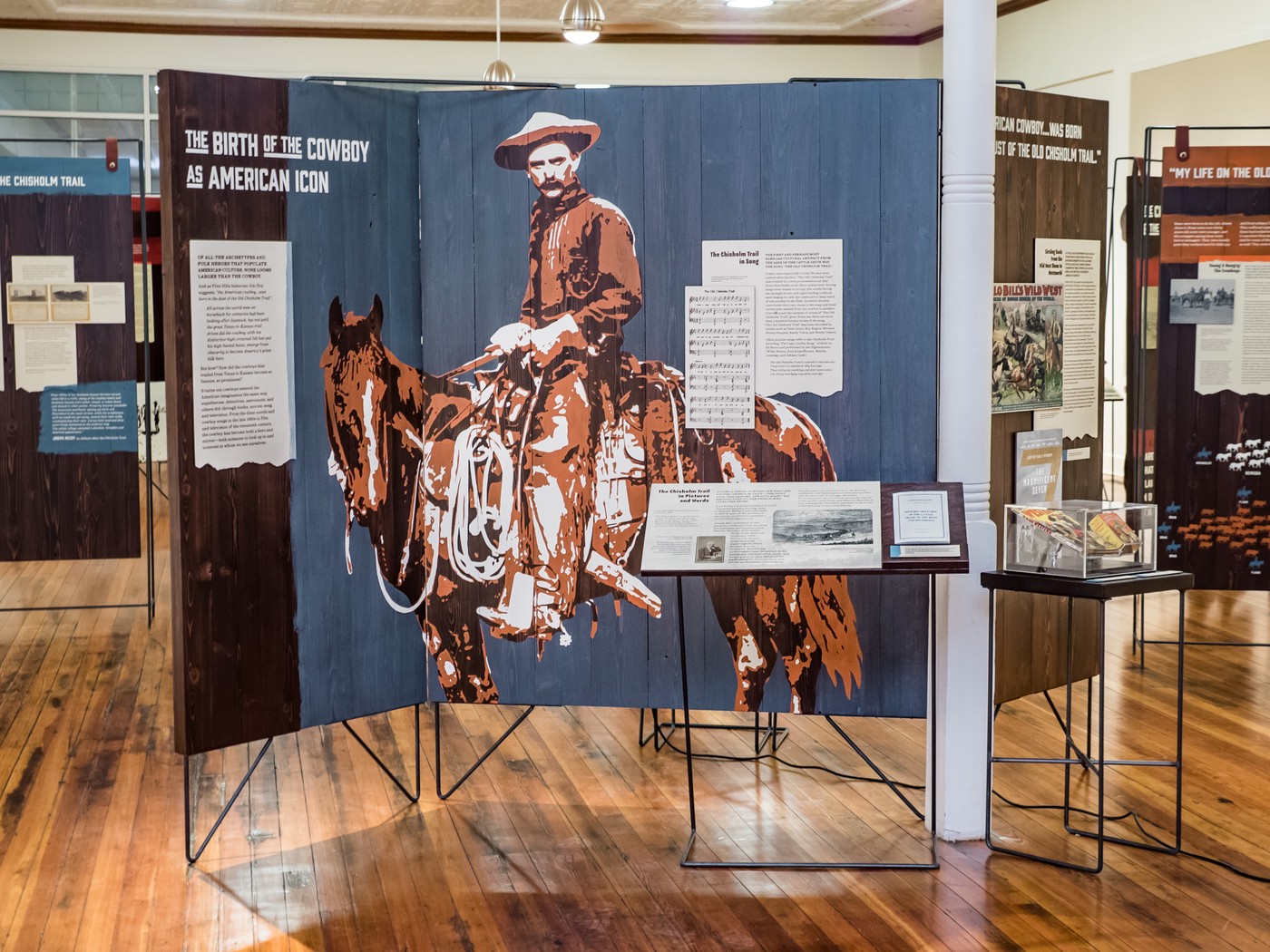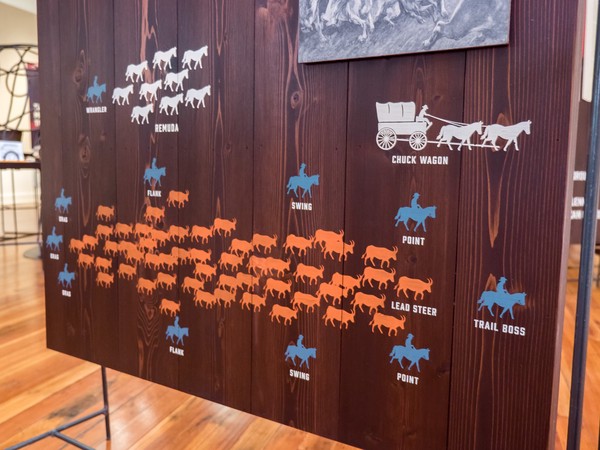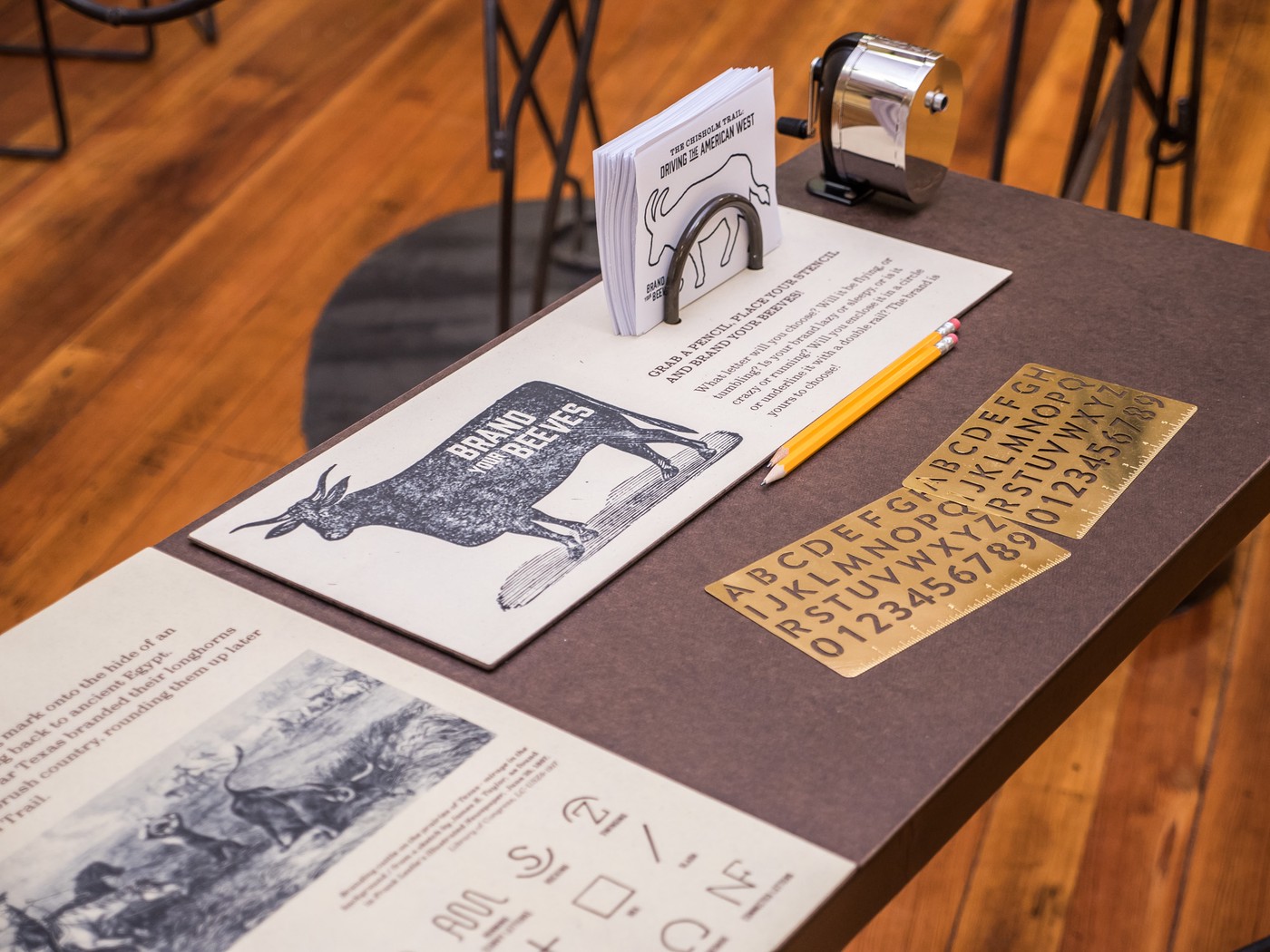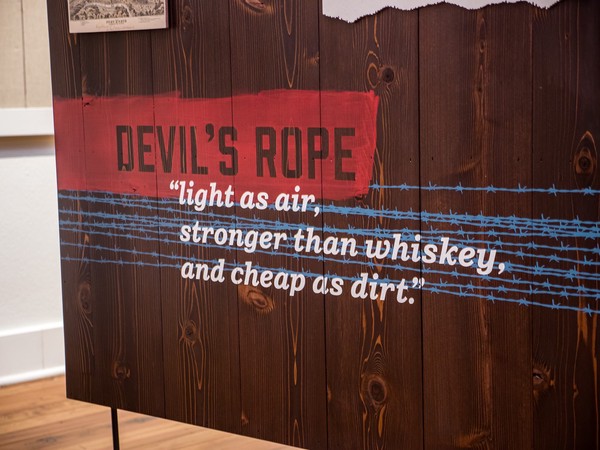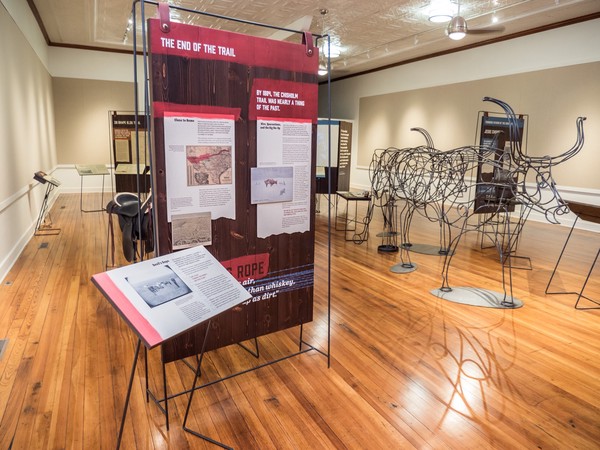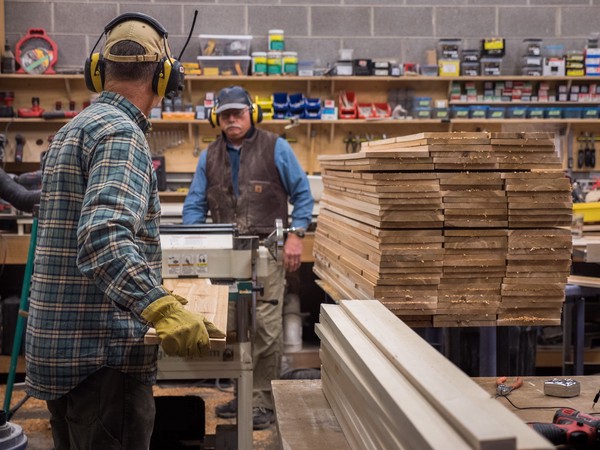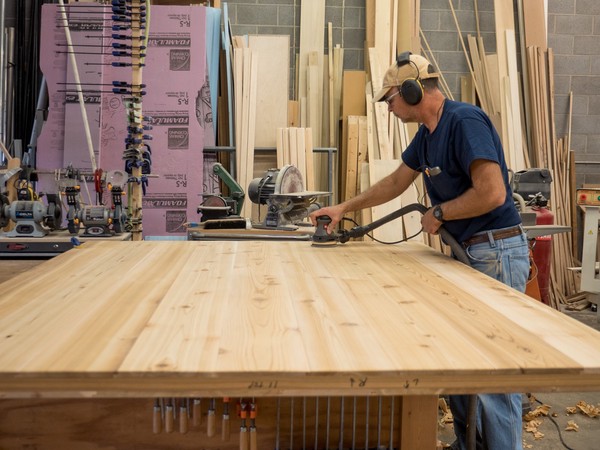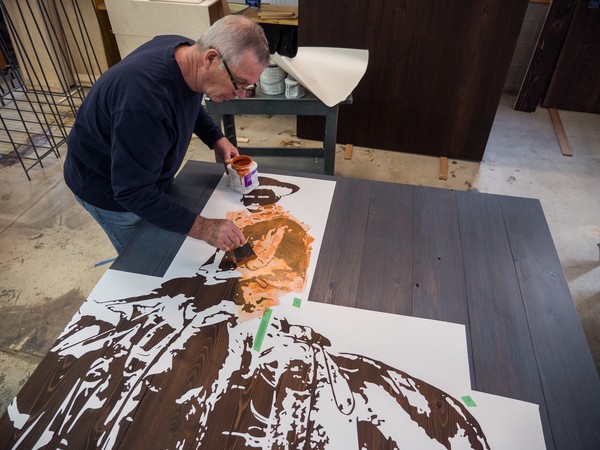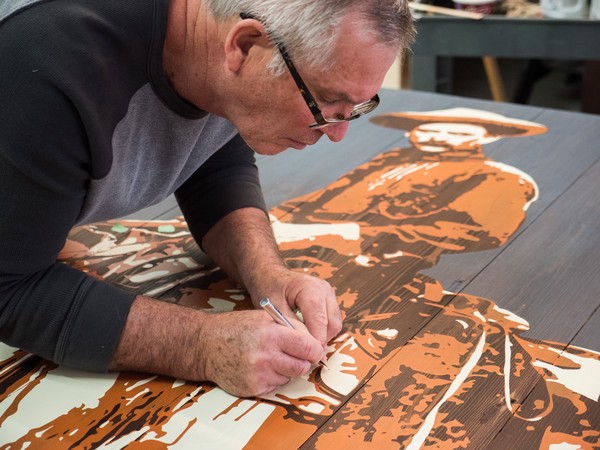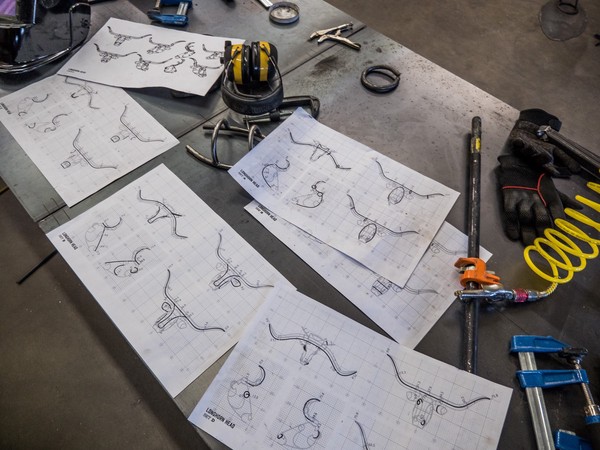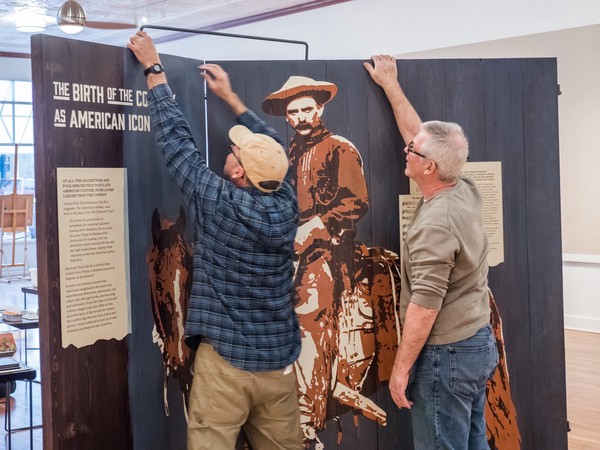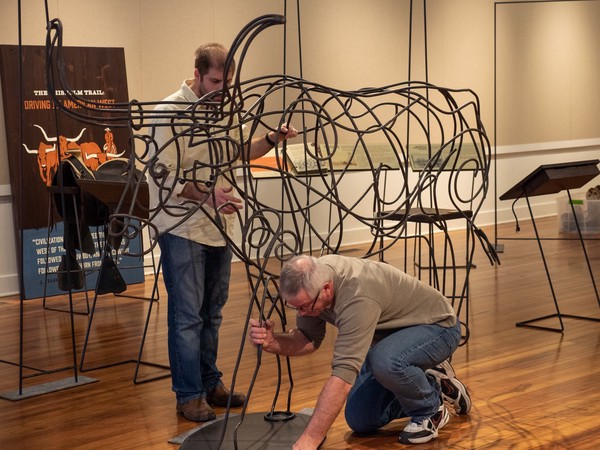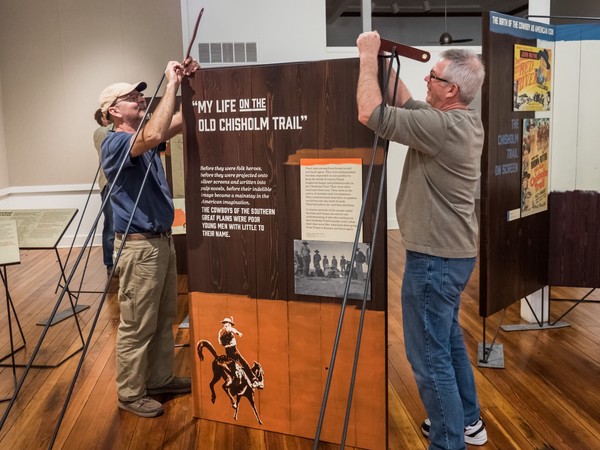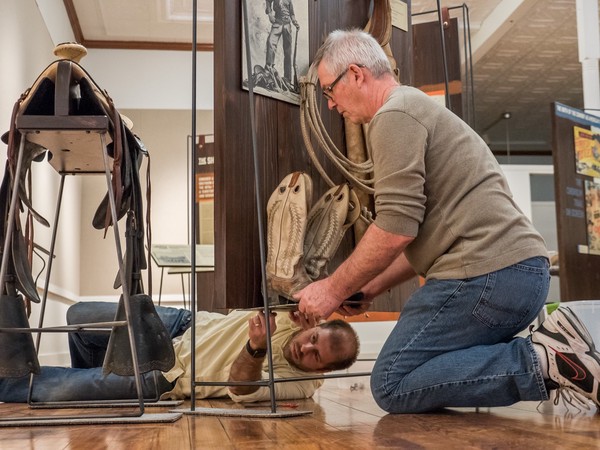After the American Civil War, the Chisholm Trail brought a glut of longhorn cattle from Texas to newly established railheads in Kansas to be transported to the North and East. 150 years since its beginnings, the team at Flint Hills Design partnered with the Symphony in the Flint Hills to develop, design, and fabricate a traveling exhibit covering the rise and fall of the trail as well as its lasting impact. I was pleased to serve as the primary exhibit designer, graphic designer, and handle a fair amount of project management as well.
Behind the Scenes
Inspired by the materials and production methods of the late 1800s the distinctive look and feel of the exhibit makes use of stained wood panels overlaid with painted stencil graphics and cream paper interpretive panels and supported by bent steel rod.

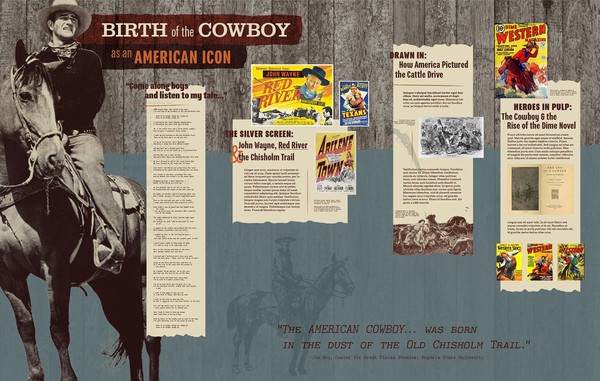
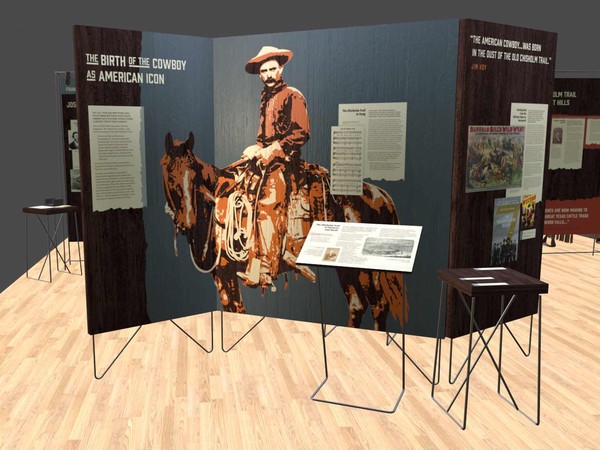
Computer models enabled us to virtually update visual design, swap components, alter floor plans, and render realistic imagery of the exhibit before committing to physical fabrication. This allowed us to review and accurately communicate design developments and decisions with collaborators and constituents. Digital iterations led to real world prototyping which fed back into the computer model for a more robust process than either method could provide alone.
To convey a sense of the longhorn cattle—and their imposing headgear—a pair of actual size sculptures were created. A stylized wireframe form allowed for an accurate representation of the animals’ scale yet kept weight down to a manageable level for traveling the exhibit. I designed the longhorns digitally, put together assembly drawings, and even pitched in alongside the fabrication team in the sculpting process.
Every few months the exhibit was packed up, transported to a new venue, and set up again. The first destination was the Symphony in the Flint Hills headquarters in Cottonwood Falls, Kansas.



